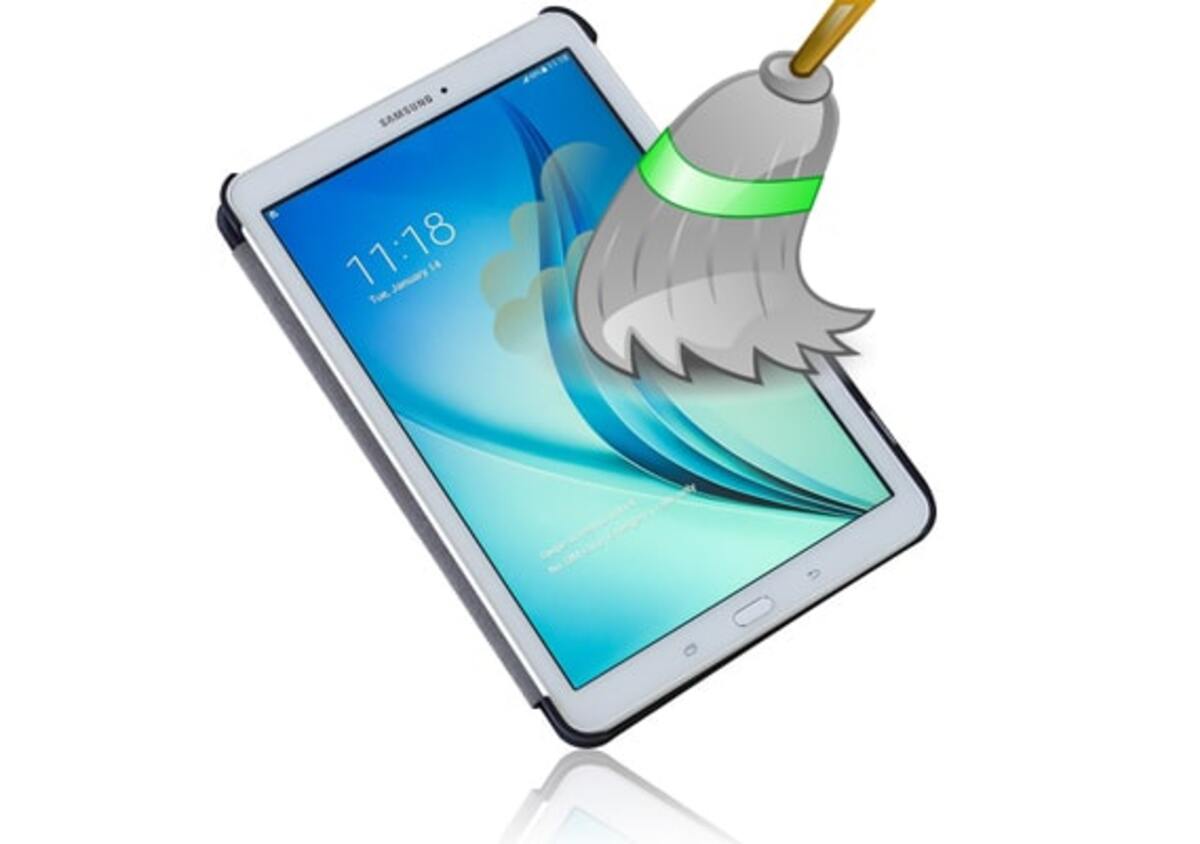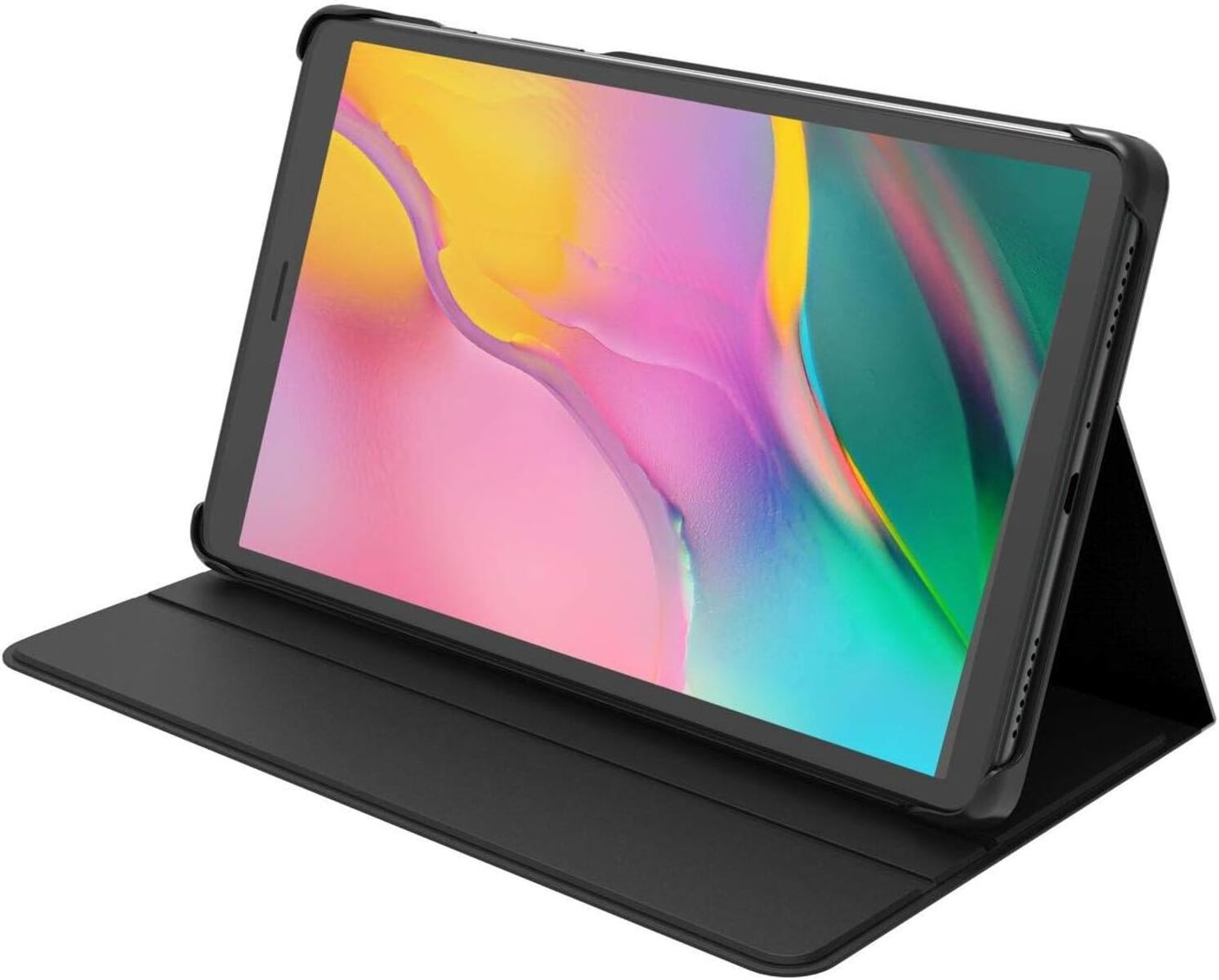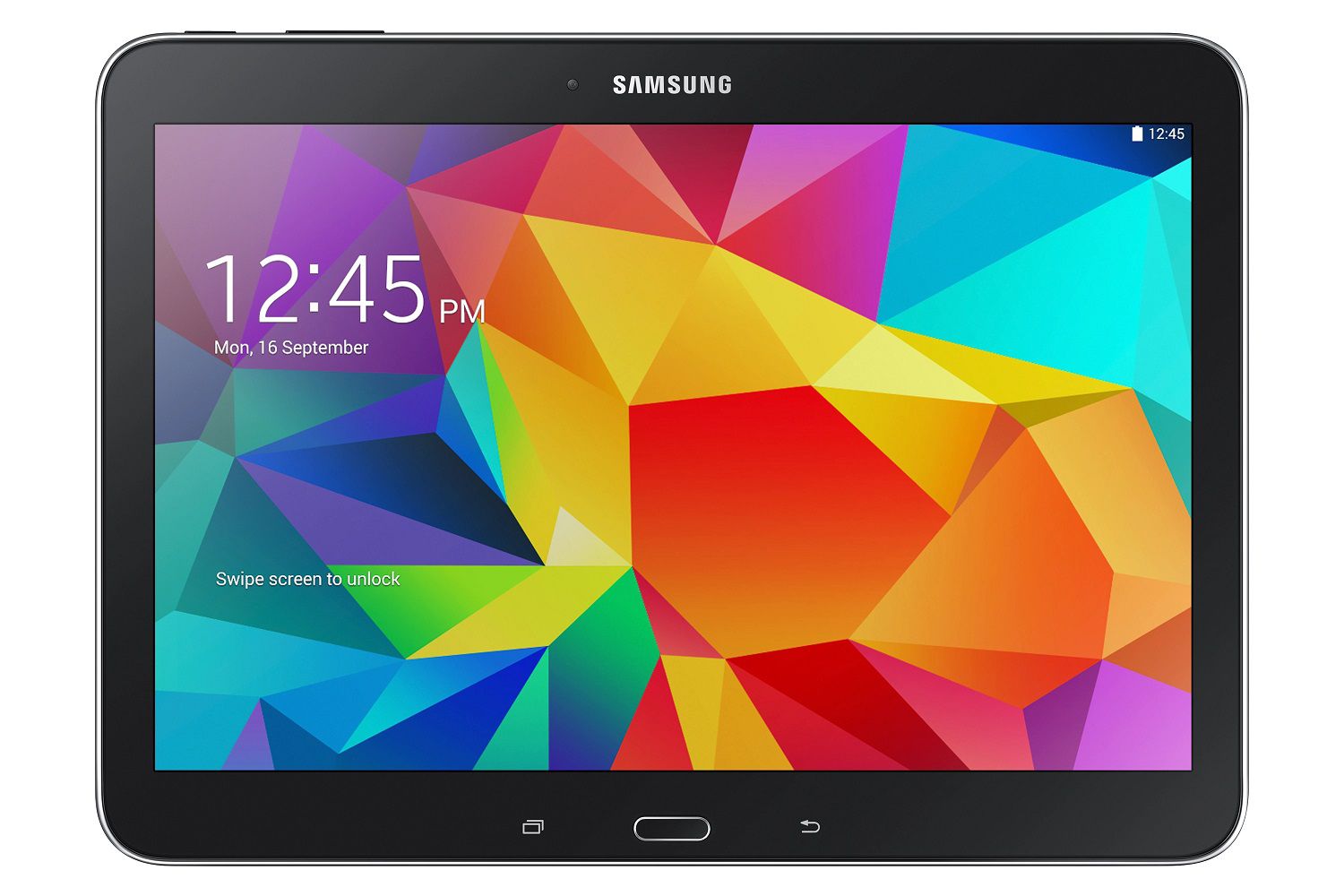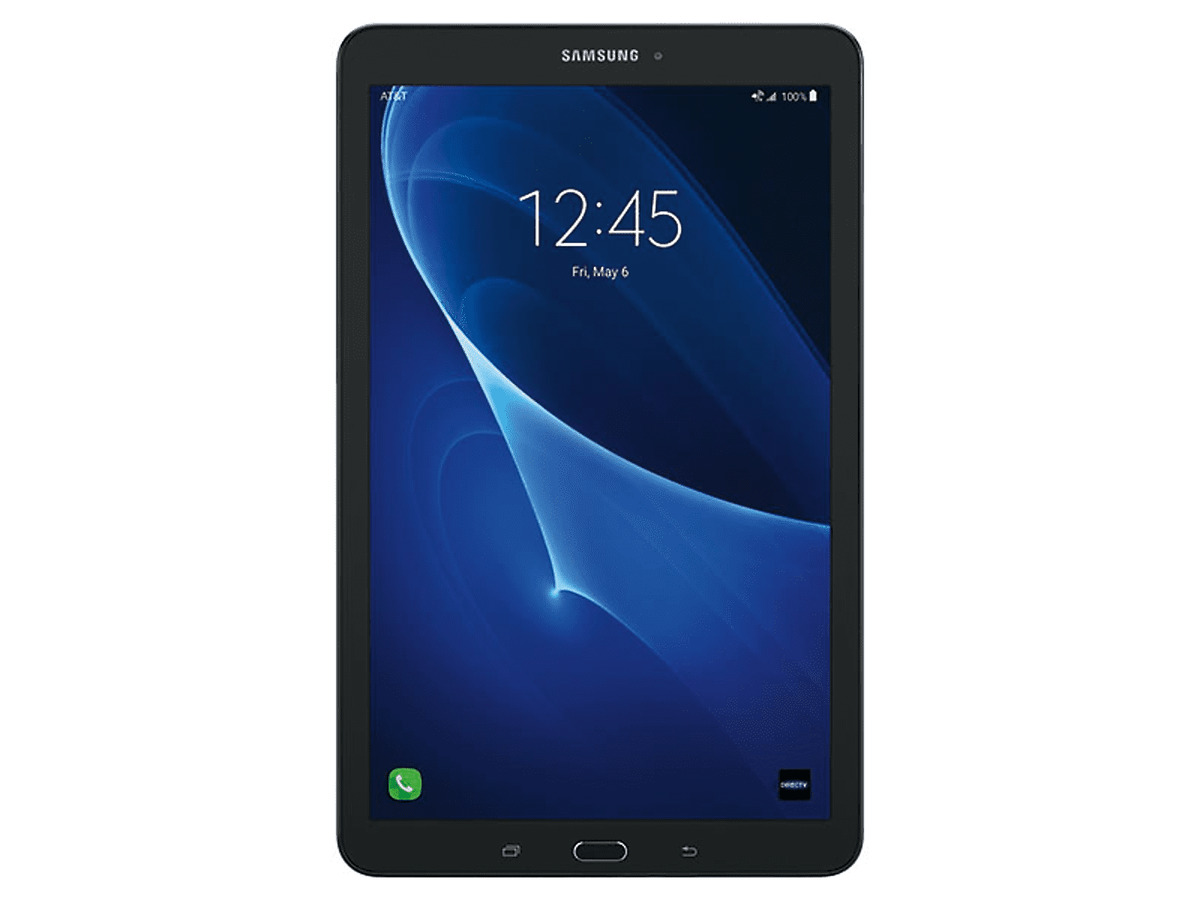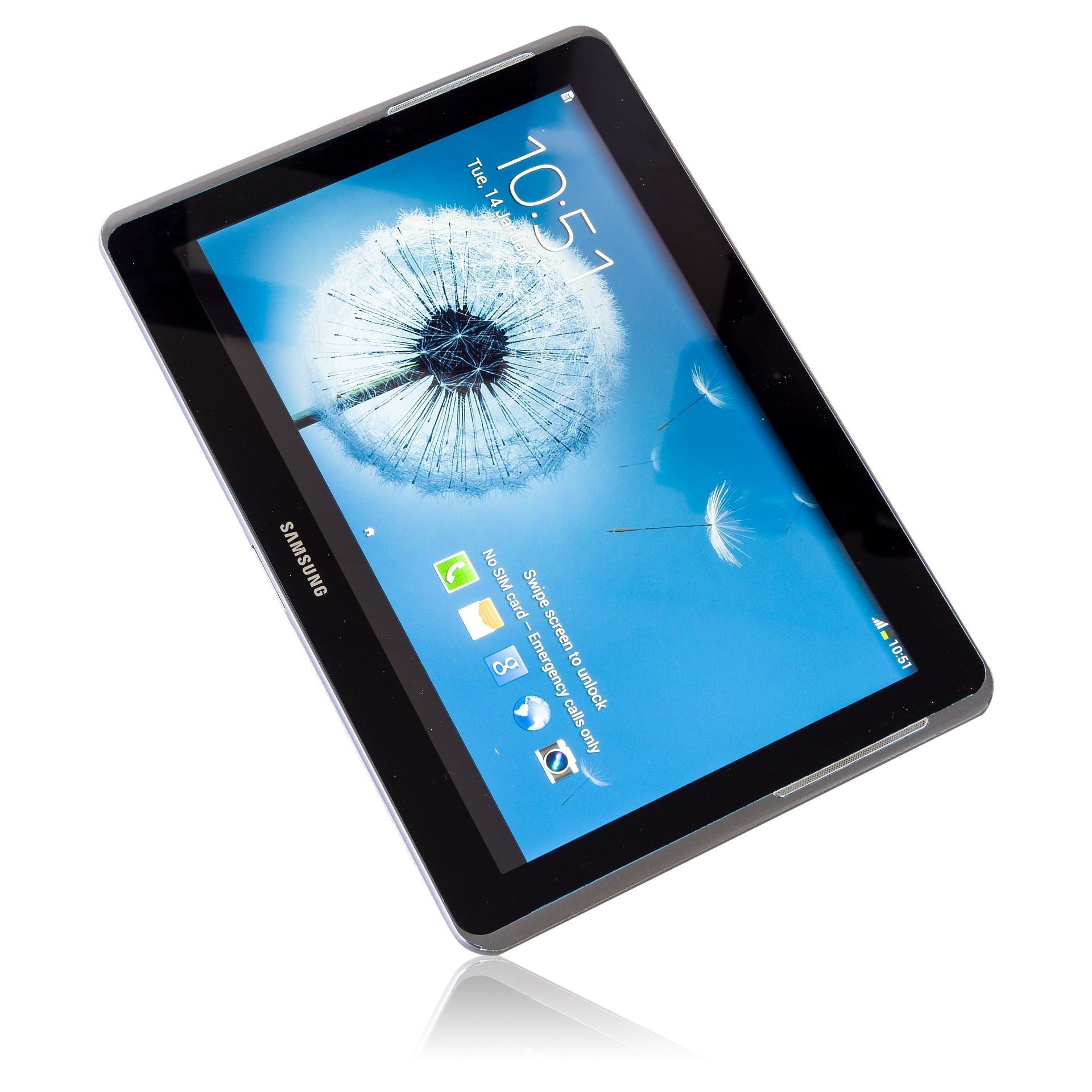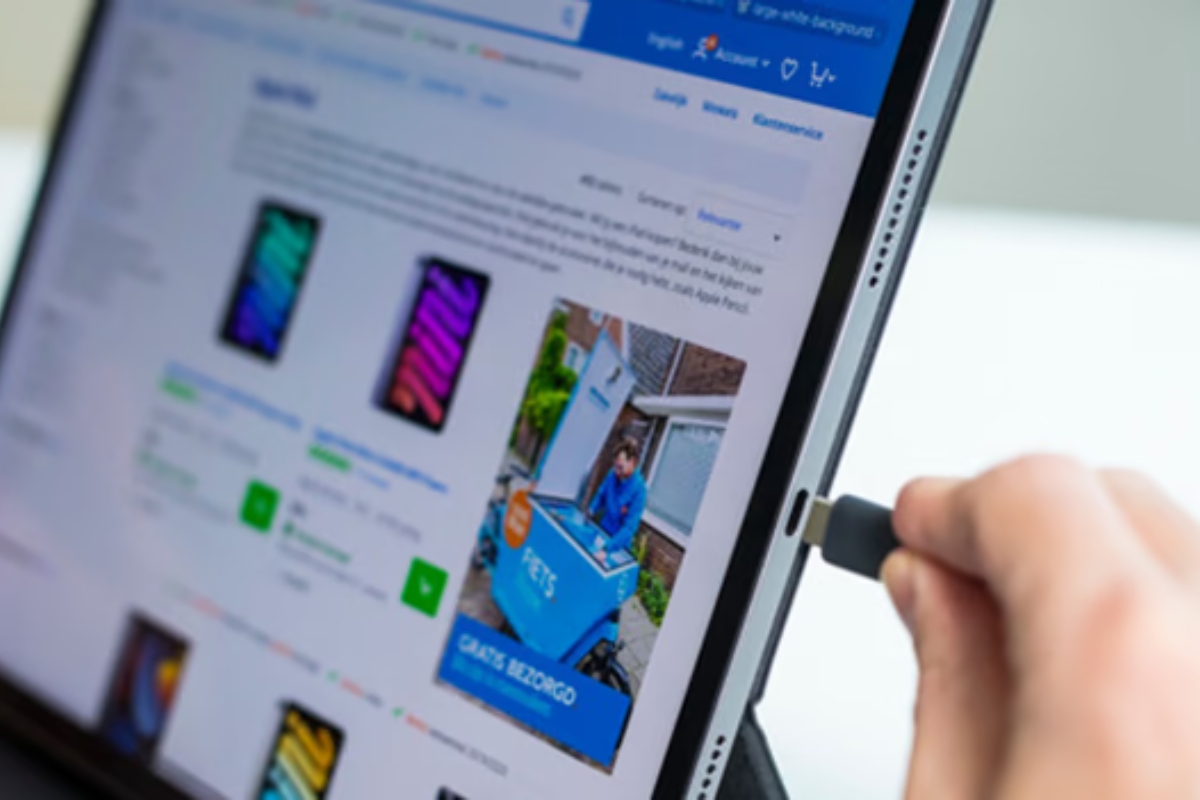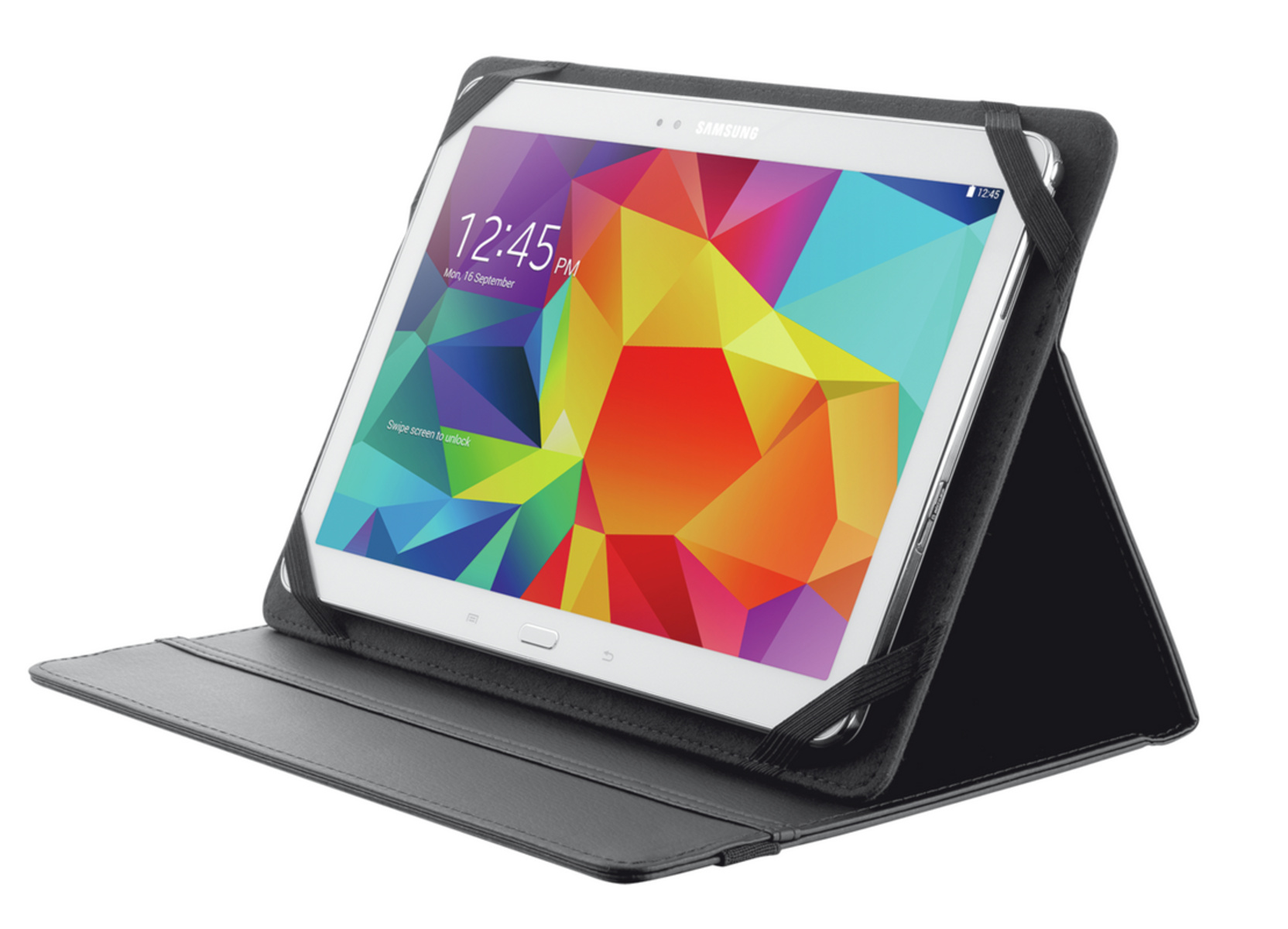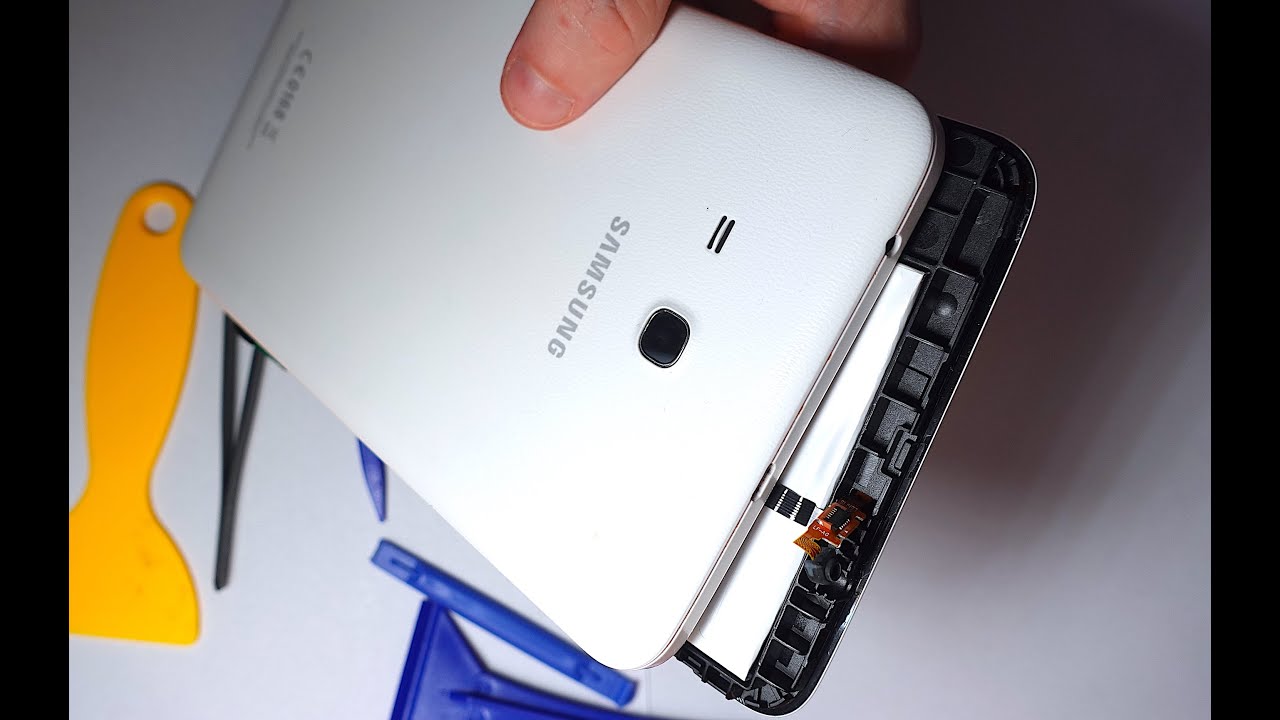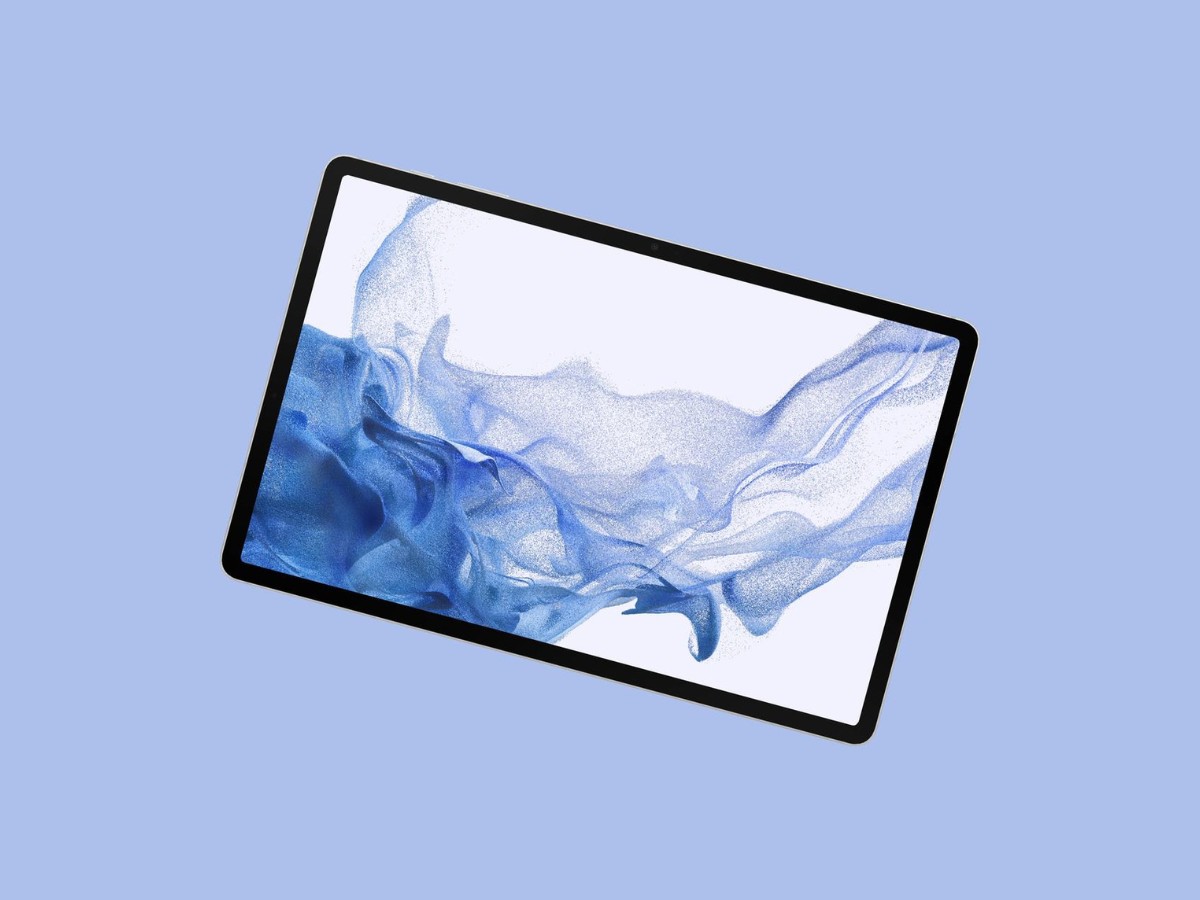Introduction
Welcome to this guide on how to clean up your Samsung Galaxy Tablet. Over time, your tablet can become cluttered with unnecessary files, apps, and data, leading to decreased performance and storage space. By following the steps outlined in this article, you can effectively optimize your tablet and restore its speed and functionality.
A clean tablet not only enhances its performance but also provides a seamless user experience. Whether you are experiencing lagging issues, slow response times, or simply want to free up storage space, this guide will walk you through the process of cleaning up your Samsung Galaxy Tablet.
Before proceeding, it is important to note that the steps mentioned in this guide may vary slightly depending on the model and Android version of your tablet. However, the basic concepts and principles remain the same.
So, let’s get started on decluttering and optimizing your Samsung Galaxy Tablet to ensure that it performs at its best.
Step 1: Clearing Cache and Data
One of the most effective ways to kickstart the cleanup process on your Samsung Galaxy Tablet is by clearing the cache and data from your installed apps. Over time, apps accumulate temporary files and data, which can eat up storage space and slow down your tablet’s performance.
To clear the cache of individual apps, follow these steps:
- Go to the “Settings” menu on your tablet.
- Select “Apps” or “Applications”, depending on your Android version.
- Scroll through the list of installed apps and tap on the app you want to clear the cache for.
- In the app settings, tap on “Storage”.
- Here, you will find the option to clear the cache. Tap on it, and confirm when prompted.
In addition to clearing the cache, you can also clear the data of apps that you no longer use or apps that are consuming a significant amount of storage space. However, be cautious as clearing data will reset the app to its default settings, and you may lose any saved preferences or login information.
To clear the data of an app:
- Follow the same steps as clearing the cache up to step 4.
- Tap on “Clear data” and confirm when prompted.
Remember to exercise caution when clearing the data of important apps like email clients, as you may need to reconfigure your accounts and set up the app from scratch.
By clearing the cache and data of unnecessary or resource-intensive apps, you can free up valuable storage space and improve the overall performance of your Samsung Galaxy Tablet.
Step 2: Uninstall Unnecessary Apps
Uninstalling unnecessary apps is an essential step in decluttering your Samsung Galaxy Tablet and optimizing its performance. Many times, we download and install apps that we no longer use or need, which take up valuable storage space and can slow down the device.
To uninstall apps from your tablet, follow these steps:
- Go to the “Settings” menu on your tablet.
- Select “Apps” or “Applications”.
- Scroll through the list of installed apps and find the ones you want to uninstall.
- Tap on the app you want to remove.
- You will see an option to “Uninstall” or “Remove”. Tap on it, and confirm when prompted.
Consider removing apps that you haven’t used in a while or that are no longer relevant to your needs. Be cautious when uninstalling system apps, as they may be necessary for the proper functioning of your tablet.
In addition to manually uninstalling apps, you can also use the Play Store’s “My Apps & Games” section to easily identify and remove unused apps. Open the Play Store app, tap on the menu icon (usually three horizontal lines), and select “My Apps & Games”. Go to the “Installed” tab to see a list of all installed apps, sorted by size or last used. From here, you can select apps and uninstall them as needed.
By removing unnecessary apps, you can free up storage space, reduce memory usage, and improve the overall performance and responsiveness of your Samsung Galaxy Tablet.
Step 3: Delete Unwanted Files and Folders
Deleting unwanted files and folders is crucial to maintaining a clutter-free and optimized Samsung Galaxy Tablet. Over time, various files such as photos, videos, documents, and downloads can accumulate and take up valuable storage space.
Here are some ways to identify and delete unwanted files:
- Use the built-in File Manager: Your Samsung Galaxy Tablet comes with a built-in File Manager app that allows you to explore and manage your device’s files and folders. Open the File Manager and navigate to different directories such as ‘Downloads’, ‘Pictures’, ‘Videos’, and ‘Documents’. Review these folders and delete any files that you no longer need.
- Utilize cloud storage: If you have limited storage space on your tablet, consider uploading your files and documents to cloud storage services like Google Drive, Dropbox, or OneDrive. Once your files are safely stored in the cloud, you can delete them from your tablet to free up space while still accessing them whenever needed.
- Remove duplicate files: Duplicate files can consume unnecessary storage space on your tablet. You can use third-party apps like “Files by Google” or “Duplicate File Fixer” to scan your device and identify duplicate files. Review the results and delete any duplicates to regain storage space.
- Clean up app-specific folders: Some apps create their own folders to store data, such as downloaded files or cache. For example, messaging apps may store media files in a specific folder. Open the File Manager and explore the app-specific folders, deleting any unnecessary files that are taking up space.
When deleting files and folders, exercise caution and avoid removing anything vital to the functioning of your tablet or important personal files. It is also a good practice to back up important files and documents before deleting them.
By regularly deleting unwanted files and folders, you can not only free up storage space but also improve the overall performance and speed of your Samsung Galaxy Tablet.
Step 4: Organize Home Screen and App Drawers
Organizing your home screen and app drawers can greatly enhance the overall user experience and make it easier for you to locate and access your frequently used apps and widgets on your Samsung Galaxy Tablet.
Here are some tips for organizing your home screen and app drawers:
- Remove unnecessary shortcuts: Take a look at your home screen and app drawers and identify any shortcuts or widgets that you no longer use or need. Long-press on the shortcut or widget and drag it to the “Remove” or “Delete” option that appears at the top or bottom of the screen. This will help declutter your home screen and create a more streamlined interface.
- Create folders for similar apps: Grouping similar apps in folders can help you save space and make it easier to locate specific apps. To create a folder, long-press on an app icon and drag it on top of another app icon. This will create a folder containing both apps. Continue adding apps to the folder by dragging and dropping them. You can customize the folder name to reflect the apps it contains.
- Arrange apps alphabetically or by category: If you prefer a more organized approach, you can arrange your apps alphabetically or by category. To arrange alphabetically, open the app drawer and look for the options icon (usually represented by three vertical dots or lines). Tap on it and select “Sort” or “Arrange” options. Choose the alphabetical order and confirm. To arrange by category, create folders based on categories such as social media, productivity, or gaming and move the respective apps into the appropriate folders.
- Utilize multiple home screens: Your Samsung Galaxy Tablet allows you to have multiple home screens. Take advantage of this feature by organizing your apps and widgets across different screens according to your usage patterns. You can swipe left or right to access different home screens and customize each one to contain specific apps or widgets.
Remember that organizing your home screen is subjective, and you should arrange it in a way that best suits your needs and preferences. Regularly review and update the organization to keep it optimized for your usage.
By organizing your home screen and app drawers, you can save time searching for apps, reduce clutter, and improve the efficiency of your Samsung Galaxy Tablet.
Step 5: Optimize Battery Usage
Optimizing battery usage is crucial for maximizing the battery life and overall performance of your Samsung Galaxy Tablet. By implementing some smart techniques and settings adjustments, you can extend the battery life and avoid unexpected shutdowns due to battery drain.
Here are some tips to optimize battery usage on your tablet:
- Adjust brightness and screen timeout: Lowering your screen brightness and reducing the screen timeout can significantly save battery power. Go to “Settings” and find the “Display” or “Brightness” option to adjust the brightness level. Similarly, locate the “Screen timeout” or “Sleep” option and set it to the shortest duration that suits your usage patterns.
- Use adaptive brightness: Enabling adaptive brightness allows your tablet to automatically adjust the screen brightness based on the ambient lighting conditions. This way, your screen brightness is optimized without unnecessarily draining the battery.
- Limit background app refresh: Background app refresh consumes battery power as it allows apps to refresh their content in the background. Go to “Settings”, select “Apps”, and tap on each app to customize its background app refresh settings. Choose to either disable background refresh entirely or limit it to crucial apps only.
- Disable or limit unnecessary connectivity options: Features like Wi-Fi, Bluetooth, NFC, and GPS can drain your tablet’s battery when not in use. Disable any of these options when you are not actively using them. Alternatively, you can enable the “Airplane mode” to disable all wireless connections and save energy.
- Use Power Saving mode: Most Samsung Galaxy Tablets offer a built-in Power Saving mode that limits background activities and adjusts various settings to conserve battery power. Go to “Settings”, select “Battery”, and enable the Power Saving mode to optimize battery usage.
- Monitor battery usage: Keeping an eye on your battery usage can help identify apps or services that are consuming excessive power. Go to “Settings”, select “Battery”, and review the battery usage details. Identify any apps or services that are using a significant amount of battery and take appropriate action, such as closing unnecessary apps or adjusting their settings.
Implementing these battery optimization techniques can significantly enhance the battery life of your Samsung Galaxy Tablet, allowing you to use it for longer periods without worrying about running out of power.
Step 6: Update and Optimize Apps
Keeping your apps updated and optimized is essential for ensuring the smooth performance and security of your Samsung Galaxy Tablet. App updates often include bug fixes, performance improvements, and new features that enhance the overall user experience.
Here’s how you can update and optimize your apps:
- Enable automatic app updates: Go to the Google Play Store settings by tapping on the menu icon (usually three horizontal lines) and selecting “Settings”. Under the “General” section, tap on “Auto-update apps”. Choose the “Auto-update apps over Wi-Fi only” option or select “Auto-update at any time” to allow updates over mobile data as well. With automatic updates enabled, your apps will be updated in the background without any manual intervention.
- Manually update apps: If you have disabled automatic app updates or want to update specific apps manually, you can do so through the Google Play Store. Open the Play Store app, tap on the menu icon, and select “My Apps & Games”. Here, you will see a list of installed apps with available updates. Tap on the “Update” button next to each app to update them individually.
- Manage app permissions: Reviewing and managing app permissions can help optimize your tablet’s performance and protect your privacy. Go to “Settings”, select “Apps”, and choose an app from the list. Tap on “Permissions” to see the permissions requested by the app. Disable any permissions that are not necessary for the app’s functionality to minimize resource usage and data access.
- Clear app cache and data: Over time, app cache and data can accumulate, leading to increased storage usage and potential performance issues. To clear app cache and data, go to “Settings”, select “Apps”, and choose an app. Tap on “Storage” and then select “Clear cache” to remove temporary files. If needed, you can also tap on “Clear data” to reset the app to its default settings and remove any stored user data.
- Uninstall unused or resource-intensive apps: Regularly review your installed apps and uninstall any that you no longer use or that consume a significant amount of resources. Removing unnecessary apps frees up storage space and can improve overall performance.
By regularly updating your apps, managing permissions, and optimizing app settings, you can ensure that your Samsung Galaxy Tablet runs smoothly, stays secure, and takes full advantage of the latest features and enhancements.
Step 7: Factory Resetting the Device
Factory resetting your Samsung Galaxy Tablet is a last resort option to completely restore your device to its original state. This step should only be taken if all other methods of cleaning and optimizing your tablet have failed, or if you want to start fresh and remove all personal data.
Before performing a factory reset, it is crucial to back up all important data, such as contacts, photos, videos, and documents, as this process will erase everything stored on your tablet.
To perform a factory reset on your Samsung Galaxy Tablet, follow these steps:
- Go to the “Settings” menu on your tablet.
- Scroll down and select “General management” or “System”.
- Tap on “Reset” or “Reset options”.
- Select “Factory data reset” or “Factory reset”.
- Read the warnings and confirm your decision to proceed with the reset.
- Enter your device’s passcode or pattern lock if prompted.
- Finally, tap on “Delete all” or “Reset” to initiate the factory reset process.
Once the factory reset process is complete, your tablet will be restored to its original settings. You will need to go through the initial setup process, including connecting to a Wi-Fi network, signing in with your Google account, and reinstalling your preferred apps.
It is important to note that a factory reset should only be performed when necessary, as it erases all data and settings on your tablet. However, if you are experiencing major performance issues or want to remove all personal information before selling or giving away your tablet, a factory reset can help in achieving a clean slate.
Remember to backup your important data before proceeding with a factory reset to ensure that you can restore your files and settings after the process is completed.
Conclusion
Congratulations! You have successfully learned how to clean up and optimize your Samsung Galaxy Tablet. By following the steps outlined in this guide, you can enhance the performance, speed, and storage capacity of your tablet, ensuring a seamless and enjoyable user experience.
Throughout this guide, we covered various steps, including clearing cache and data, uninstalling unnecessary apps, deleting unwanted files and folders, organizing the home screen and app drawers, optimizing battery usage, updating and optimizing apps, and, as a last resort, factory resetting the device.
Remember to regularly perform these optimization techniques to keep your tablet running smoothly and efficiently. Cleaning up your tablet not only improves its performance but also alleviates storage concerns, allowing you to take full advantage of the features and capabilities your Samsung Galaxy Tablet has to offer.
However, it’s important to note that your specific tablet model or Android version may have variations in certain steps or features. It’s always a good idea to consult your device’s user manual or the Samsung support website for any specific guidelines.
Now that you have the knowledge and tools to clean up your Samsung Galaxy Tablet, go ahead and put them into practice. Enjoy the improved performance, responsiveness, and storage space on your tablet, ensuring a seamless and efficient experience for all your digital needs.







